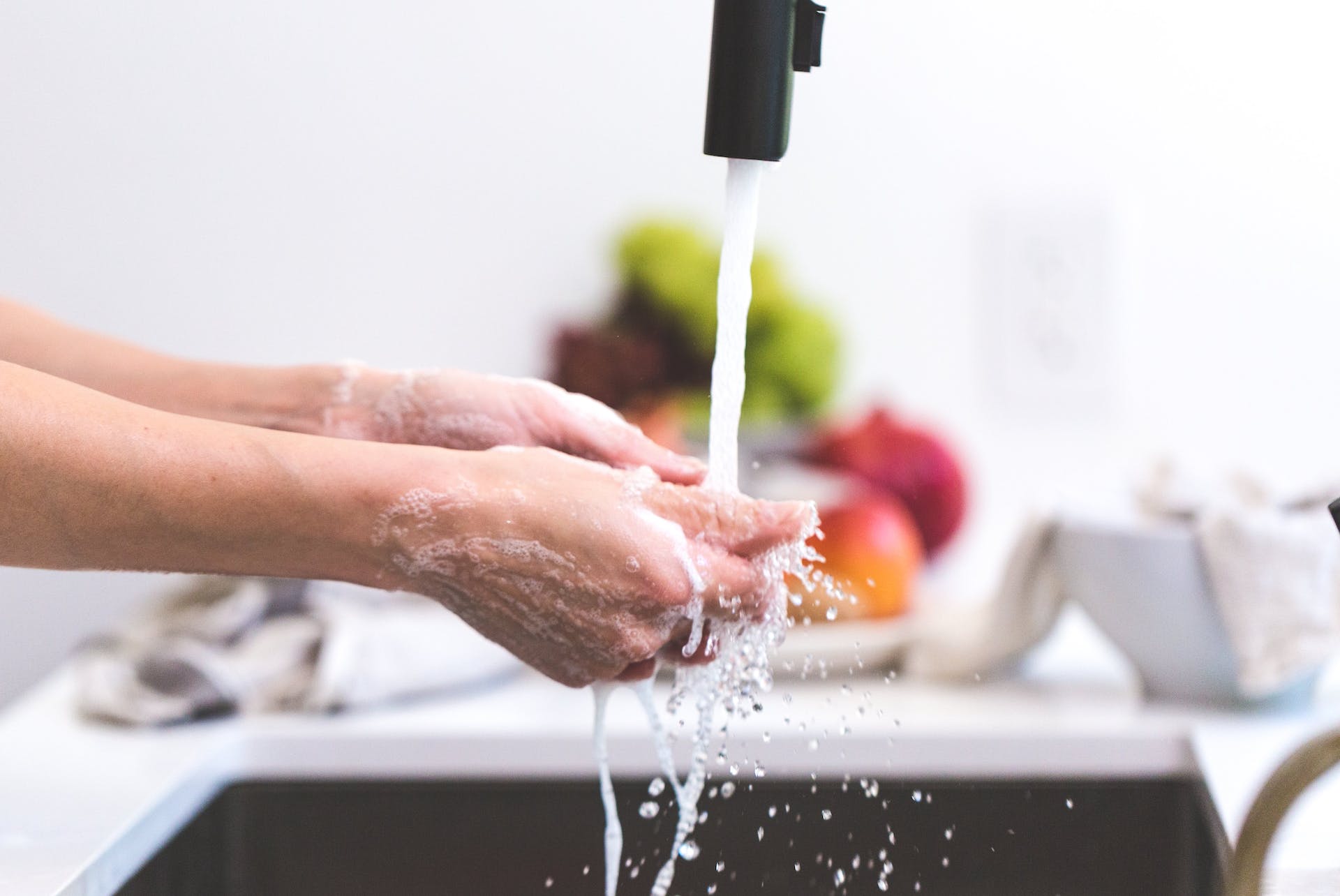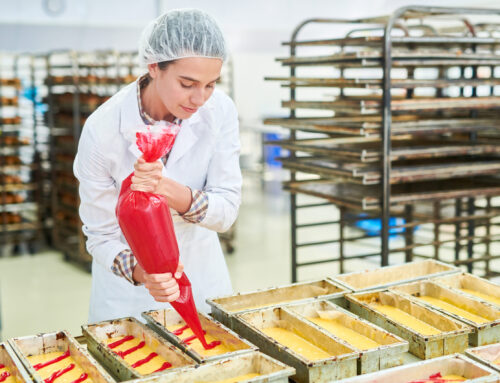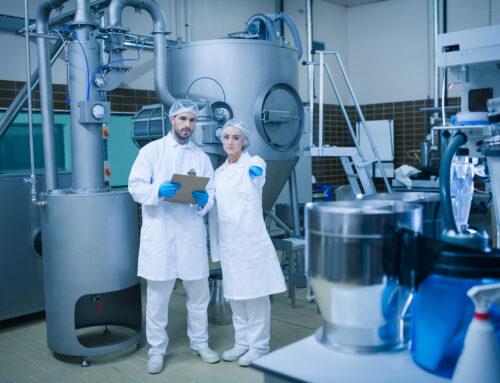In the world of food processing and manufacturing, practicing safety and good hygiene in your facilities is a responsibility that must be taken seriously. This responsibility extends to each and every employee, at every step in the process.
Today, Manex’s food safety team will outline the risks that can arise from poor hand hygiene, as well as look at some practical steps you can take to ensure a culture of safety in your workplace.

The Risks of Improper Handwashing
There are two key elements of food safety: the science and the basic mechanics. In our practice, we see them as equally important, particularly handwashing on the plant floor. The nature of food processing means there will always be a risk of contamination in the facilities if basic food safety practices are not followed. Perhaps the most critical – and simplest of these to follow – is handwashing hygiene specific to food handling and manufacturing. Just as doctors wash their hands frequently, and more intensely than the general public so must the food production team at your plant.
When employees come into contact with food during any part of the process without properly washing their hands, they risk contaminating the entire chain of operations. Bacteria and other microorganisms like Salmonella, E. Coli, and Norovirus can easily be transferred into food through improper handling or cross-contamination of tools and surfaces.
Not only could a setback like this cost a company thousands of dollars, it can also result in serious illness and even death for consumers.
Regulatory Standards for Handwashing
Because of its importance to overall food safety, the U.S. Food and Drug Administration (FDA) maintains extensive requirements for handwashing and handwashing facilities. These requirements dictate what a hand sink must have, including:
- Providing personnel with adequate handwashing facilities.
- Ensuring soap is readily available.
- Maintaining the availability of hot running water for handwashing.
- Providing a means for drying hands, whether single-use paper towels, sanitary towel service, or electric hand dryers.
- Water timers to ensure the correct length of washing.
The U.S. Department of Agriculture also offers additional guidelines for meat and poultry processing. Depending on the location of your facilities, additional local and state guidelines may also be enforced. It’s important to understand what local regulations may apply to your facility to remain in compliance.
Enlist Food Safety Experts to Meet Local and State Guidelines
Food production facilities around the country are routinely inspected by the FDA. Businesses that are found in violation of any FDA or local food safety standards can be fined, or worse yet, shut down. Therefore, it is imperative to your business that you constantly strive for excellence in all matters of food safety. Manex food safety consultants are experts in food safety standards and can advise companies on local and state guidelines, from handwashing station regulations to processing and distribution.
Hand Washing Best Practices
When it comes to actually washing your hands, there are a number of best practices to follow to mitigate the risk of contamination:
- Wash your hands with soap and water for at least 20 seconds. Since the Covid-19 pandemic, it is even suggested to wash for 30 seconds.
- Ensure you are using hot water, ideally over 100 degrees Fahrenheit.
- Be sure to scrub between your fingers and nails, including the palms and backs of your hands.
- Rinse thoroughly for at least 10-20 seconds.
- Dry hands, preferably with a paper towel, or electric hand dryer. Do not wipe dry on your own clothing, which may contain contaminants.
It is also important to note that the utilization of hand sanitizer is not a replacement for proper handwashing. Whether hand sanitizer is available or not, all employees should continue to use proper hand-washing techniques.
Following these best practices for handwashing will go a long way in mitigating the spread of pathogens and other contaminants in the workplace.
Employee Training
A commitment to food safety and hygiene must extend from leadership, down throughout the organization. As such, it’s important to make sure all employees are fully trained on basic food safety practices, as well as handwashing techniques.
These techniques should be covered during the onboarding process for new employees, but it shouldn’t stop there. Reinforcing these techniques through refresher courses and ongoing training modules is key to creating a culture of safety. In addition, management should consider routine inspections of handwashing facilities to ensure they are up to standard.
It’s also important to note that violations of food safety and handwashing requirements should be taken seriously. It may be tempting to sweep such seemingly minor occurrences under the rug, but it only takes one person ignoring the protocols to cause a major issue that can cost your company time, money, and even your reputation.
Additional Considerations
Aside from how to practice good hand hygiene, there are a few other related issues that we should cover.
In Which Areas Must a Handwashing Sink Be Located?
There are a few locations where it is absolutely necessary to have a handwashing sink.
- Food Preparation Areas. Anywhere that food is being handled or processed, a wash station should not be far.
- Restrooms. A handwashing station should be located either in, or just outside, all restrooms.
- Within Other Work Areas. Sinks should also be provided anywhere else that workers may be in contact with food, including kitchens, prep areas, conveyors, and packaging stations.
What Else Must a Handwashing Sink Have?
Aside from the previously mentioned requirements for a handwashing station, there are a few other things to keep in mind.
- Signage. Proper signage identifying the handwashing station should be easily visible to all employees in the area.
- Lighting. The area should be well-lit, so there is no issue seeing if the hands or the sink are actually clean.
- Accessible. The handwashing stations should not be located in a difficult-to-reach location, nor require walking to another part of the facility. The station should also be accessible to those with disabilities.
- Single Usage. Handwashing sinks should be used only for the handwashing of employees. Food prep or dishwashing should not be done in the same sink as handwashing.
Conclusion
The importance of food safety cannot be understated. Practicing good handwashing is an easy step that everyone in your organization should take to minimize the spread of contamination.
Manex offers a full spectrum of food safety compliance and training services, including implementation of food safety, regulations, and food handling best practices to Northern California food manufacturers and processors.
Contact our food safety team at info@manexconsulting.com to see how Manex can help your business stay safe and compliant.


